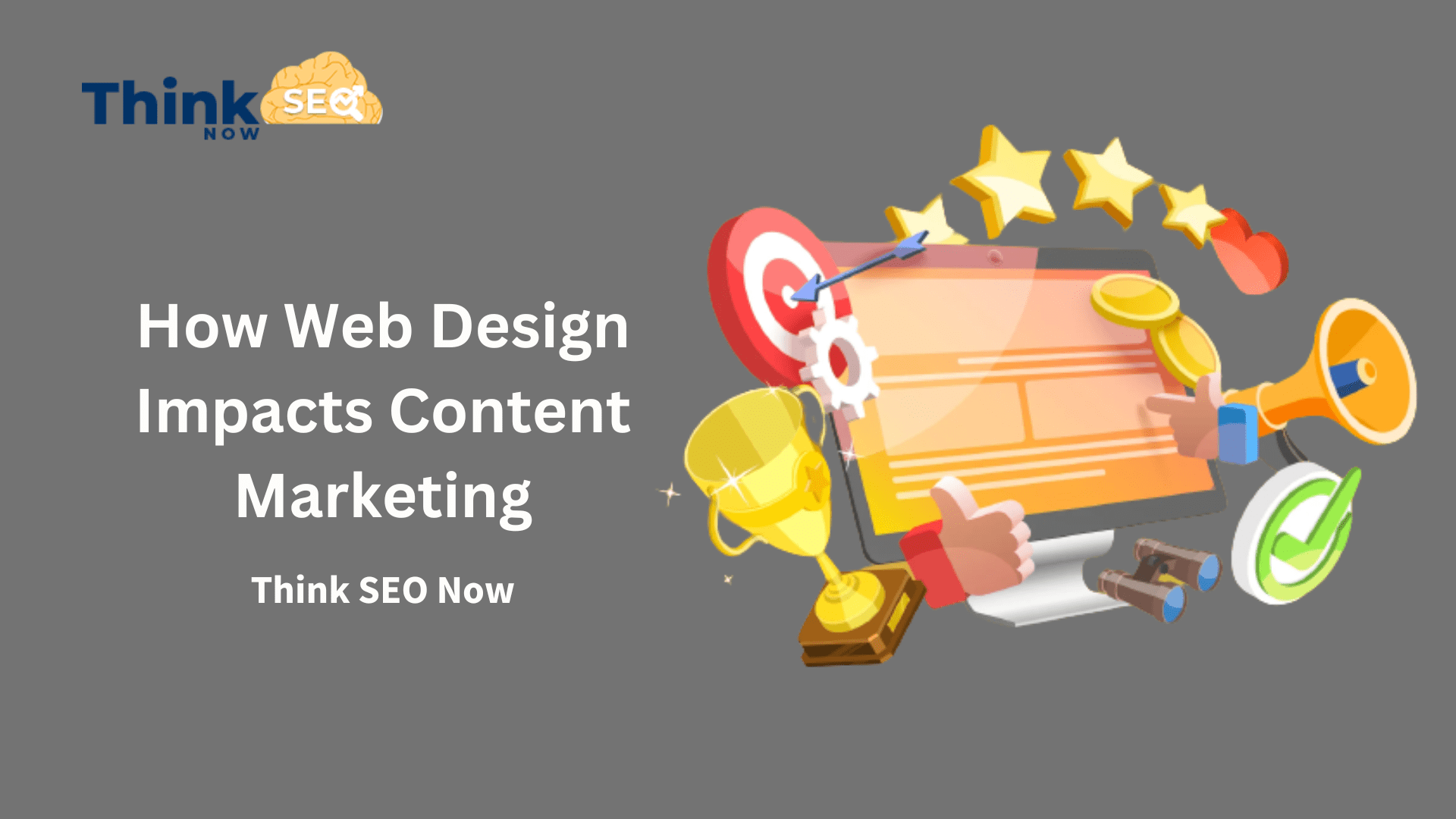
The success of every online business depends on a number of essential factors in today’s fast-paced, always-changing digital environment. Web Design and content marketing stand out among them as two pillars, each of which is essential in determining how a business is represented online. Despite appearing to be separate on the surface, web design and content marketing have a close relationship that may make or break a brand’s success. In this article from Think SEO Now we will fascinating explore the connection between web design and content marketing and look at how your website’s design can significantly affect the success of your content marketing efforts.
What is content marketing?
The process of releasing material that indirectly promotes a company’s brand or product by offering useful and pertinent information is known as content marketing. Content marketing stands as a fundamental pillar within the realm of search engine optimization (SEO). SEO, an economical marketing strategy, presents the opportunity to secure higher rankings in search engine results. This synergy between content and SEO is pivotal for online visibility and success.
The first impression: Web Design’s role
Imagine you’re walking into a brick-and-mortar store. The storefront’s appearance, layout, and organization immediately shape your first impression. If it’s welcoming, well-organized, and aesthetically pleasing, you’re more likely to stay and explore further. Conversely, a cluttered, disorganized, or unattractive storefront might prompt you to turn around and seek alternatives.
Similarly, your website serves as the digital storefront for your brand, and web design is the key to creating that all-important first impression. Here’s how web design plays a pivotal role:
User experience (UX): good web design focuses on providing an excellent user experience. An intuitive navigation menu, responsive design, and fast loading times ensure that visitors can easily access and engage with your content. A clunky, slow website can frustrate users, causing them to bounce before even considering your content.
Trust and credibility: a professional and polished website design conveys trust and credibility. When a website appears trustworthy and authoritative, users are more likely to believe the content there. Because readers are more inclined to interact with material coming from a reputable source, this trust is essential for content marketing.
Consistency: your brand identity is strengthened by maintaining consistency in design components like fonts, colors, and branding. Because of this familiarity, users are more likely to recognize and relate to your material, which increases its effect.
The content conduit: How Web design supports Content marketing
We can now see how crucial good web design is to make a good first impression, so let’s look at how it helps content marketing techniques succeed:
Readability and accessibility: content marketing depends on giving your audience useful information. A well-designed website will make your material available on a range of devices and simple to read. Appropriate typeface, spacing, and adaptable design enable a relaxing reading experience. This keeps readers interested in your content.
Call-to-action (cta) placement: effective content marketing often includes cats to guide users toward desired actions, such as signing up for a newsletter or making a purchase. Web design plays a crucial role in placing these ctas strategically. A well-designed website will incorporate cats seamlessly into the layout, increasing the likelihood that users will respond to them.
Visual storytelling: Graphics, films, and other visual content are effective tools for content marketing. These visuals have a canvas thanks to web design, which enables you to present your content in an interesting and captivating way. The positioning and blending of visual components can have a big impact on how your message is understood.
Content organization: web design dictates how your content is organized and presented. A clear and logical content structure helps visitors find the information they seek. Whether it’s a blog, an e-commerce site, or a news portal, a well-structured website enhances the discoverability of your content, making it more accessible and valuable to your audience.
Loading speed: content marketing efforts can suffer if your website takes too long to load. A slow website can lead to high bounce rates, which means visitors never engage with your content. Web design optimizations, such as image compression and efficient coding, are essential to ensure speedy page load times.
SEO Friendliness: Search engine optimization (SEO) is vital for content marketing success. A website’s design can have a significant impact on its SEO performance. A clean, well-structured design with proper HTML markup and meta tags can improve search engine rankings.
Additionally, mobile responsiveness, page load speed, and user experience, all influenced by web design, are factors that search engines like Google consider when ranking websites. Therefore, investing in good web design can indirectly boost your content’s visibility in search engine results.
Conclusion: the power of synergy
In the digital realm, web design and content marketing are not isolated entities; they are partners in success. Your website’s design forms the gateway to your content, shaping visitors’ perceptions and influencing their engagement. Understanding the mutually beneficial relationship between site design and content marketing will help you to use their combined potential to provide an engaging online presence that appeals to your target market.
Investing in both excellent web design and persuasive content marketing is not a choice in a world where competition for online attention is severe. When these two elements work in harmony, they can transform casual visitors into loyal customers, elevating your brand to new heights in the digital landscape. So, remember, the next time you embark on a content marketing journey, your web design is your trusted companion, guiding the way to success.
